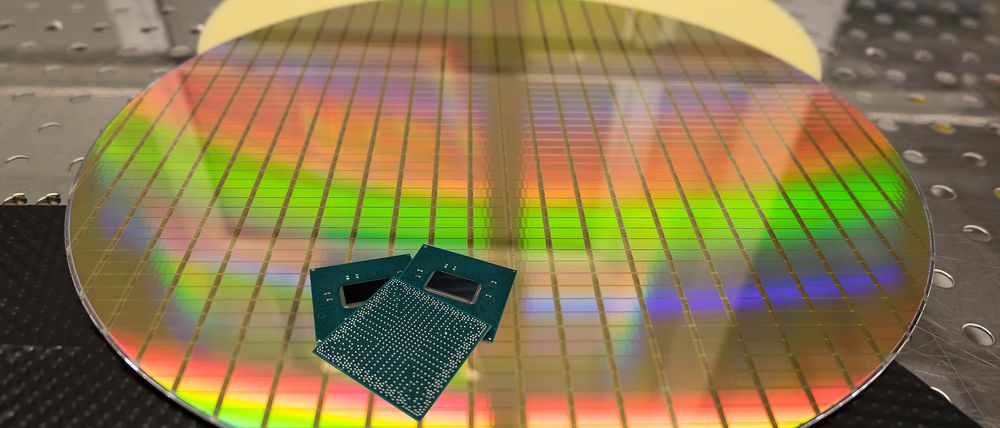Silicon (Si)
Silicon Crystal
At the heart of most modern electronic semiconductors is a wafer thin slice of silicon (Si) crystal. Silicon is considered a Metalloid; not quite a metal, not quite not a metal, and is the second most abundant element in the earth's crust (after oxygen):
Silicon for semiconductor usage is highly purified down to 11n purity, which means 99.999999999% pure, or 1 non silicon atom per 100 million silicon atoms. In fact there's less than a dozen companies in the world that have the ability to purify it enough to be used in chips. Once purified, it's sliced very thin and then individual components such as transistors are etched onto it to form the basis of chips, known as Integrated Circuits (ICs):

Silicon's ability to be both a conductor and an insulator lies in its atomic structure. The structure gives rise to a crystal lattice in which every atom is connected to four other silicon atoms, creating what's known as a face-centered-diamond-cubic, which basically means that it creates a cube with a diamond structure in the middle:
In order to understand why silicon is such a great semiconductor, we have to first understand its atomic structure.
Valence Electrons
Recall from chapter 1, that an atom is made up of a nucleus, containing positively-charged protons and neutrally-charged neutrons, and negatively-charged electrons orbiting around it:
The electrons that orbit the nucleus can exist in different energy states, which correspond to their average distance from the nucleus. Each of these energy states is called an electron shell. The electrons that travel the farthest from the nucleus have the most energy and are called valance electrons, which, generally, form the valance shell. For example, oxygen has 8 electrons total, but only 6 of them are in the valence shell:
The valence shell is the most chemically important portion of an atom, because it determines how readily, and how many, other atoms it will combine (bond) with to form molecules. A full valence shell contains 8 electrons, and when this exists, it's called a closed shell, and these atoms are chemically inert. Examples of elements with a closed shell are the noble gasses; so-called because they don't react with other elements.
When two atoms are bonded together in a molecule or material, they share valence electrons. An element tends to bond in ways that fill its valence electron count to 8. For instance, water, which has the molecular signature of H2O, meaning it has 2 hydrogen atoms and one oxygen atom, fills its valence shell with 6 valence electrons from oxygen, and 1 electron from each hydrogen atom:
Silicon Valence Electrons
The atomic lattice shape of a silicon crystal comes from the fact that it has 4 valence electrons, and will therefore readily bond with 4 other silicon atoms, sharing an electron from each of the other four silicon atoms:
This forms a crystalline structure that acts as an insulator at room temp and loses its resistance as its temperature increases, becoming a conductor.
Doping
Pure silicon is an intrinsic semiconductor and isn't very interesting in terms of its behavior. However, through a process known as doping, in which impurities are added in precise amounts to change its chemical structure, extrinsic semiconductors are created. There are two extrinsic semiconductors used in electronics, P-type, and N-type. Let's examine P-type, first.


